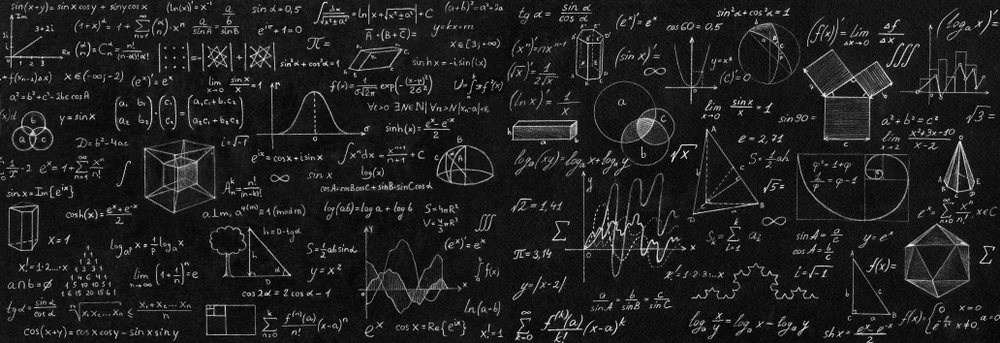Everything You Need to Know About the AP Physics C Exam
When it comes to the most advanced high school students in the United States, taking AP courses, and subsequently taking AP exams such as the AP Physics C Exam, is a fantastic way to separate one’s self from the herd.
Not only do AP courses such as the AP Physics C Exam allow students to prepare for the challenging topics that they will face in top colleges like Ivy League schools or schools within the UC system (and get the chance to actually earn college credits), but also go a long way in strengthening a college application, and allow students to dive deeply into the topics that they find most interesting and compelling.
With that being said, even the most talented students will not want to rely solely on their own intelligence to get the most out of every AP course they enroll in. Succeeding in every AP course takes quite a bit of preparation and know-how, and that’s especially true when it comes to acing the AP exam and scoring a 5 out of 5.
For that reason, if you are thinking about enrolling in AP Physics C and want to get a perfect score on the exam, you will not only want to study the subject (of course) but also study the exam itself! That’s how you will make the most out of your time and effort.
Luckily, here at AdmissionSight, we have trained professionals who know exactly what it takes to ace the AP Physics C Exam. They know what it takes because they’ve done it themselves.
So, without any more delay, let’s break down the mechanics of the AP Physics C Exam together.
About the AP Physics C Exam
One of the most popular of all the AP courses is the introductory AP Physics 1 and related exam. With that being said, while AP Physics 1 is highly popular, the other AP Physics courses that are offered are far less popular.
In fact, less than half as many students take the other three available AP Physics courses and exams combined compared to the introductory course. When it comes to the AP Physics C Exam, there are two courses that high school students can take.
The first is AP Physics C: Mechanics and the second is AP Physics C: Electricity and Magnetism. While the AP Physics 1 and AP Physics 2 courses and exams are perfectly suited for students who are interested in pursuing careers in life sciences, pre-medicine, or other forms of applied sciences along with other fields that are not related to science at all.
When it comes to the two Physics C courses, however, they are considered to be more appropriate for students who are interested in pursuing a major in college (and a career after school) that deals specifically in the physical sciences.
Overall, the AP Physics C Exam: Mechanics is considered to be the same as taking one semester of an introductory, calculus-based physics course that students would take at a four-year college or university.
Content covered in the course
The AP Physics C: Mechanics course is divided into two different components. One is known as scientific practices and the other is known as big ideas. Through studying and exploration of these two larger topics, the goal is for each student to gain a greater understanding of physical science and its laws.
The two topics cover the following:
- Scientific Practices: Teaches children the skills that are needed to think and behave like a physicist in the real world. About a quarter of the instructional time in class will have students work on hands-on lab work. These topics will be weighted both in the coursework and on the exam:
- Big Ideas: The Big Ideas section of AP Physics C: Mechanics tasks students with grappling with and understanding the core principles, theories, and processes of discipline in order to gain a greater understating of the physical world and its laws. The four Big Ideas topics include:
Beyond that, there are seven common units of the AP Physics C course that high school teachers will guide their students through. Each unit will show up on the exam in one form or another.
AP Physics C Exam
Mechanics
When it comes to the AP Physics C: Mechanics exam, it is actually one of the shortest AP exams that students can take at just one hour and 30 minutes in length. However, that of course does not make it one of the easiest.
In fact, it is actually known as one of the more difficult AP Exams. The best way to guarantee your success is to prepare. Part of that preparation is knowing what to expect. So here are the two different sections that you will face when taking the exam.
Section 1: Multiple Choice
The first section of the AP Physics C: Mechanics exam is made up of 35 multiple-choice questions and spans 45 minutes. Your performance on this section of the exam accounts for half of your total score.
Here are some samples from a past exam:
When taking the multiple-choice section, you can expect some questions to stand alone, while others will be grouped and depend on the same stimulus or data set.
Section 2: Free Response
The second section of the exam is made up of free-response questions and answers which lasts for the remaining 45 minutes and makes up the remaining 50 percent of the total score. When you cover this section, you will be asked to solve three separate free-response questions that will cover all seven of the scientific practices, and you are allowed 15 minutes to answer each.
Here is a sample from a past exam:
Remember, in order to succeed at the AP Physics C: Mechanics exam, you will be expected to bring your own four-use graphic or scientific calculator. Make sure that you know your way around the calculator, and it makes sure it is either fully charged, or bring replacement batteries just in case.
Electricity and Magnetism
When it comes to the AP Physics C: Electricity and Magnetism exam, you will be asked by covering electrostatics, conductors, capacitors and dielectrics, electric circuits, magnetic fields, and electromagnetism while using a combination of integral and differential calculus throughout the course of the class.
Because the AP Physics C Exam: Electricity and Magnetism are designed to be taken directly after the previous course and exam, it is also quite short – clocking in at just 90 minutes.
Just like the Mechanics exam, the Electricity and Magnetism exam is made up of a multiple-choice section as well as a section with free-response questions.
The multiple-choice section includes 36 multiple-choice questions in 45 minutes and accounts for half of the score. The second section takes up the remaining 45 minutes and accounts for the second half of the score.
How to prepare for the AP Physics C Exam
Whether you are taking the AP Physic C: Mechanics of the AP Physics C: Electricity and Magnetism exam, there is some fantastic guidance and some incredible tips that you can take advantage of to make sure that you are best prepared to ensure that you will score the very best score possible.
Follow these steps to get the most out of your course.
Analyze your knowledge and skills
One of the best ways to prepare for the AP Physics C Exam is to take a practice test to analyze the knowledge and skills you already possess that is related to the material.
There are a lot of great resources online, such as practice exams and actual past exams from previous years that you can take to test your skills and knowledge.
Study up on the material
While you will do a lot of learning in your AP Physics C courses every day at school, there is no doubt that much of the information you tackle and seek to fully understand will become clear to your while you do the work at home or with a study group of students and friends that are in the course with you.
In order to be fully prepared for the exam, you will want to be able to grasp large theoretical concepts, highly specific applications of principles and equations, and much more. You should also be fully comfortable utilizing both integral and differential equations so that you can make quantitative calculations related to the material.
When it comes to your lab work in your Physics C courses, you will want to be comfortable with the following tasks:
- Design experiments
- Observe and measure real phenomena
- Organize, display and analyze data critically
- Analyze sources of error and determine uncertainties in measurement
- Drew inferences from observations and data
- Communicate results, including suggested ways to improve experiments and proposed questions for further study
While mastering the material is of course incredibly important when it comes to getting the results that you want out of the AP Physics C Exam, you will also want to make sure that you familiarize yourself with the tools that you will be able to use during your exam. Primarily, that means getting used to your calculator effectively.
Take practice multiple-choice and free-response questions
When you feel that you are comfortable with the material that you have studied, it is time to return to the practice exams and start testing yourself on the types of questions that you will face on the day of the exam.
There are a lot of different resources that you can take advantage of when it comes to studying the material. Many of the study guides will have either partial or full sample tests, or you can also go online and utilize a number of different valuable resources.
You will also want to make sure that you are studying up on the free-response questions as well. One great tip is to familiarize yourself with the keywords and task verbs that the AP Physics C Exam is known to use in their free-response question section. The reason why this is important is that understanding what these verbs are specifically asking you to do with a free-response question is a major key to coming up with the right answer.
For example, a question that is asking you to justify something is very different from a question that is asking you to compare data points. One great tip that we at AdmissionSight can offer you is to make sure that you are answering what the free-response question expects from you, make it a habit to circle the task verb, and check them off as you write. That will help focus you on finding the answer that the test is looking for in order for you to score full marks.
After you have completed a free-response sample test, it is also important that you have your answer and the correct answer from the sample test place side-by-side in front of you. That way, you can go step by step to make sure that you are answering the questions correctly every step of the way.
The primary reason for this is because, in the free-response section, partial answers are given partial credit. That means that even if you are able to come up with the right answer if you do not show your full work, you may face a penalty.
It is also highly helpful to go through the whole question while comparing it to the sample answer to see if there is anything that you missed.
Take another full practice test
Just like you did at the very beginning of your studying for the exam, you will want to take another (few) full practice exams to see where you have improved and where you still need to work on to get the best score possible.
While you may benefit from taking the first sample test untimed, make sure that as you are getting closer to the real exam date, that you will want to time out both the multiple-choice and free-response sections with the real 45 minutes that are allotted on the test day. That way, your mind will get used to the speed in which you will have to answer the questions on the real day of the exam.
When it comes to your chances of passing the exam, statistically, you’re in pretty good shape. Here are the scoring breakdowns from last year’s exam:
So, if you do end up deciding to take the AP Physics C Exam, the numbers on your favor in terms of getting out what you hoped to when you decided to sign up for this extremely challenging, engaging, and impressive course.
Good luck!











































